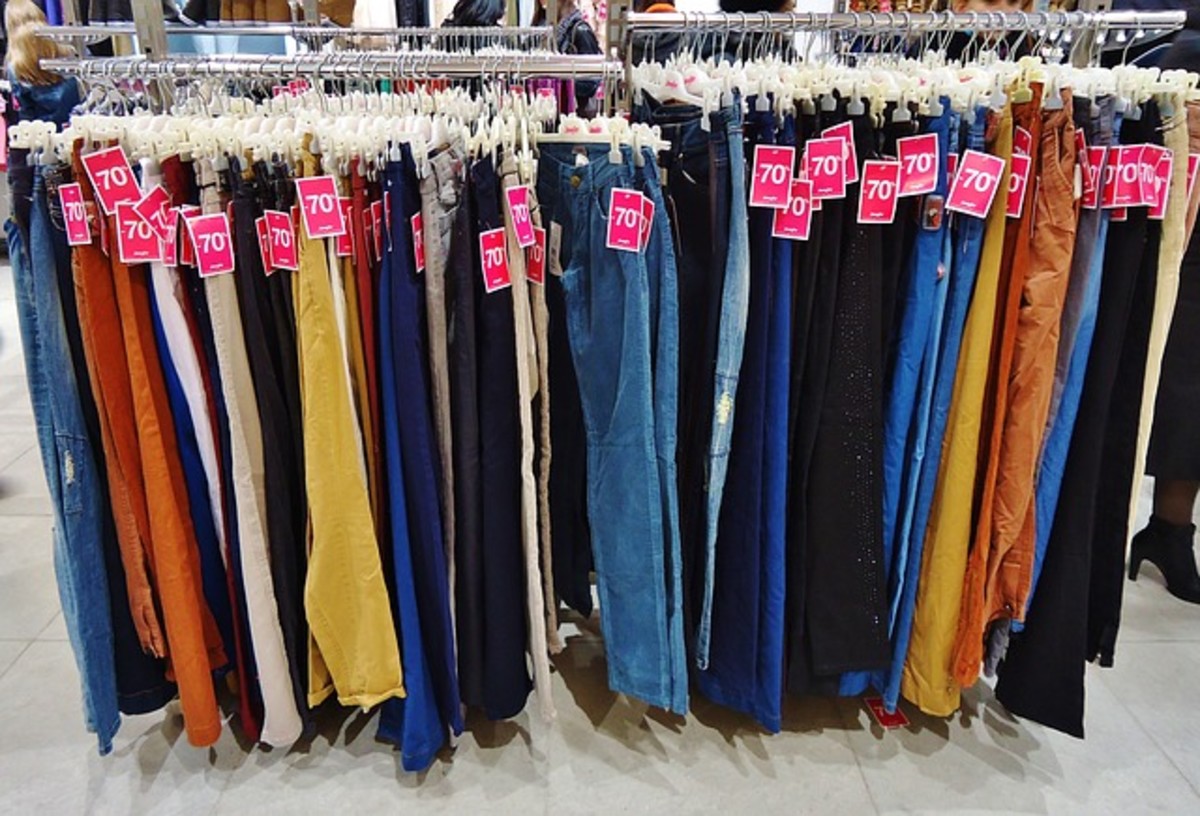Jeans and Women of the Middle East and South Asia
Excluding the Saudi Arabia, the tendency to wear jeans is found all over the Arabian world from Tunisia and Morocco in North western Africa to Syria and Iraq on its eastern ends. The women of the Syrian Republic look enchanting in blue denim, taking a lovely headscarf with it. The same is true for young Palestinian girls as well as the Egyptian and the Jordanians.
The Turkish people are known to be the first ones in the world to wear a specific kind of trousers called the pajamas--- a Persian word meaning : dress for feet. The Turks used to wear pajamas in the days when the people of Europe---men or women---wore stockings made of wool. Once, during the middle ages, a noble European women wrote to one of her friends that she had been very happy that day for she had received from a friend in Turkey a novel dress for the lower part of her body which was very amazing for her. That was the Turkish pajama, the forerunner of the modern pantaloons of the west. Turkish women too adapted the universally popular clothing item, the blue jeans, as their common dress shortly after it was introduced as a casual wear of the young Baby Boomers in the U. S. A western tourist says that a vast majority of women under thirty years put on modern western dresses. T-shirts and tight jeans are a standard among young Turkish girls.
The bright and innocent looking Iranian girls had not been lagging the European women in joining the race of jeans wearing in the early 70s. Young Iranian girls--- teenagers or older, began to put on trousers while going to their educational institutions, cinemas, or hotels. A number of cute Iranian girls could be seen before the revolution in even Pakistan and other neighboring countries dressed up in blue denim, the symbol of youth in the U. S. With the Inqilab-e- Islami or the Islamic Revolution led by Khomeini in Iran, strict measures were taken against "the freedom of women" in the country. In this respect, women were ordered to wear abaya---a loose fitting and ankle length dark colored dress covering all the body except hands and feet. The law, however, could not prevent the Iranian women to wear this globally popular apparel. According to a recently launched website concerning female fashions: Tehran.com, the women of Iran do wear J-brand skinny jeans, Ballet pumps of Tory Burch, and bags of Yves St Laurent.
The girls of the Khyber Pukhtunkhwa--the north western province of Pakistan, endowed with natural beauty, are also not ignorant of the most modern trends in fashion. An appropriate selection of wardrobe and a light make up provide additional touch to their charming look.This discussion is especially focused on an important region of this province known by the name of Charsadda.
Up till the late sixties of the previous century, the region might be termed conservative indeed in respect of life style and dress etc. By the early nineties, however, the women have become much aware of the current trends in costume design as well as the selection of shoes, bags, and purses matching with the dress worn by them. However, in spite of all these developments, neither pants nor blue jeans could be even imagined to be worn by girls of Charsadda.
The trend of wearing blue jeans began as a result of an event bearing international importance. During the year 1992, there started a large scale migration of refugees from the neighboring country Afghanistan as the anticommunist Islamic militants succeeded in overthrowing the pro-Russian government of Kabul. These immigrants mostly belonged to the elite class of the country; nonetheless, the middle and even the lower class of those refugees was also very advanced. Thousands of young girls rolled on the roads and streets of Peshawar and other cities and towns of the Khyber Pukhtunkhwa. A vast majority of those girls, possessing unmatched beauty, wore denim and blue jeans. As a consequence, the native girls belonging to the city of Peshawar and even a small city like Charsadda as well as other smaller towns of the district were also lured to the jeans fashion.
With the beginning of the twenty first century, girls in their early teens could be seen in the markets of Charsadda dressed in blue jeans and T-shirts with shoes or attractive sandals.The vogue was on its high rise during throughout the first decade of the present century, but amazingly near the end of the decade, it abruptly began to decline. The reason for its fall was probably the commencement of those extremist religious movements which cannot tolerate any signs of advancement in society. When the government started targeting their centers in the valley of Swat, so severe did they respond in the cities of Peshawar, Mardan, and Charsadda in the form of suicide attacks that all the social and cultural activities came almost to an end. There is not such a hustle and bustle in markets and public places as it used to be nearly four or five years before, so it is quite logical to observe such a drastic drop in the use of jeans or T-shirts. Consequently, except a considerably small number, no girl above twelve or thirteen years of age can be seen in jeans in the bazaars nowadays.
Jeans are by worn by young girls and women in Pakistan, but not as frequently as in the countries of the middle east, not as much as in Afghanistan which is, truly speaking, much backward than Pakistan in many respects. Young girls dressed in denim, can be seen in only big cities like Karachi, Islamabad, or Lahore etc, and even there only at posh and fashionable residential areas and commercial places. On the other hand in India, all over the country, blue denim is all the rage. Larger cities; for example, Mumbai, New Delhi, or Calcutta as well as smaller towns are all bursting with teenager girls having worn denim trousers of blue, gray, pink, yellow, and other colors.








